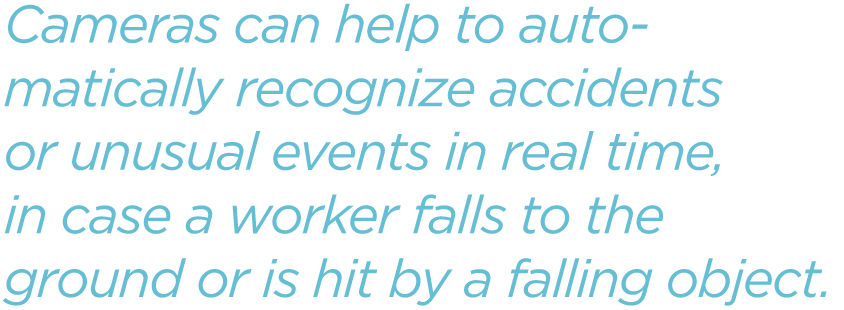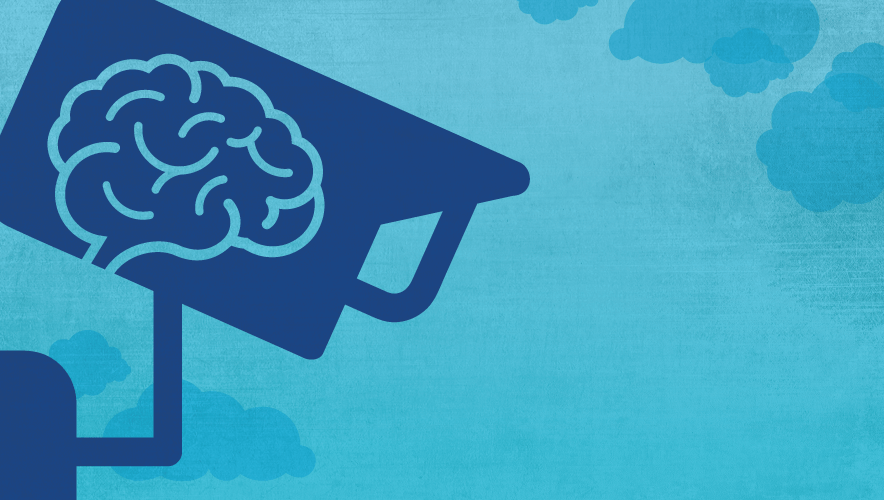Three Markets that Can Benefit from Smart Surveillance
 As we continue into 2021, organizations in nearly every business sector are continuing to adjust to changing workforce and economic conditions. Decision-makers across the board will be focusing on initiatives to accelerate their long-term technology and digitalization plans to accommodate remote and virtual operations.
As we continue into 2021, organizations in nearly every business sector are continuing to adjust to changing workforce and economic conditions. Decision-makers across the board will be focusing on initiatives to accelerate their long-term technology and digitalization plans to accommodate remote and virtual operations.
While the COVID-19 pandemic has acted as a catalyst for some, others have been spurred by the opportunities offered by the growing maturity of Artificial Intelligence (AI) and Machine Learning (ML) technologies. These new advantages, combined with cutting-edge computer vision capabilities, have enabled organizations to deploy new technologies like smart cameras with video analytics that are capable of a variety of uses.
This has opened up a whole new range of use cases, as a single smart camera equipped with AI-enabled intelligent video analytics can be used for theft detection, early smoke and fire detection, monitoring for potential hazards and many additional business and operational optimization applications. Already today, smart cameras can support healthcare facilities to improve patient safety and wellbeing or aid retailers to source valuable intelligence on shopper behavior that allows them to take measures that increase store revenue and profit. As the uses for video analytics become more and more mainstream in 2021, we anticipate seeing them expand into new industries and areas of use.
Security and Crop Monitoring in Agricultural Sectors
Surveillance and monitoring technologies are offering value to industries such as agriculture by providing a cost-effective solution for monitoring of crops and business assets and optimizing production processes. Smart cameras are among the new technologies that can assist in reducing energy usage, as well as reduce the environmental strain of modern farming.

Some niche farming organizations are already implementing AI solutions to monitor crops for peak production freshness to reduce waste and increase product quality. These solutions can also surveil vast amounts of livestock in fields to count animals, help detect the presence of predators, or to identify if an animal is injured. Other use cases include mitigating environmental threats, such as mold, parasites and other insects, as smart camera monitoring can provide early identification of these pests and trigger appropriate action before wider crop damage occurs. AI-enabled smart cameras can further be used to monitor moisture levels in soil to maintain the proper levels of hydration, as well as reduce excess water waste.
Using video monitoring in the growing environment, as well as along the supply chain, also provides value to large-scale agriculture production. Beyond optimizing processes through automation, smart cameras equipped with AI-enabled analytics can reduce risk of injury or loss due to machinery breakdown, as well as assist in preventative mechanical maintenance. Applications may also help track inventory in real-time, improving knowledge of high-demand items and allowing for better supply chain planning to reduce product spoilage.
Smart cameras in agriculture are also useful for the prevention of physical security risks to staff and products. In warehouses, object detection applications can be used to determine the presence of weapons. Also, if theft of agricultural product is a concern, zone applications can be used to notify proper personnel when an unauthorized individual enters a sensitive area of a warehouse, field, or building.
Enhanced Regulatory and Safety Measures in Industrial Complexes
In industrial settings, smart surveillance and AI-enabled applications can be used to ensure compliance with organizational or regulatory safety measures. Object detection apps can identify if employees are wearing proper safety gear, such as facial coverings, hard hats, or lifting belts. Cameras can help to automatically recognize accidents or unusual events in real time, in case a worker falls to the ground or is hit by a falling object.
A smart camera can identify necessary preventative maintenance on machinery and structures, and potential safety hazards—such as a loose cable causing sparks, potential wiring hazards, or even defects in raw materials. Other more subtle changes, such as gradual structural shifts, cracks, or increases in vibrations—ones that would take the human eye months or years to discover—are detectable by smart cameras trained to identify the first signs of mechanical deterioration.

Decision-makers at industrial facilities can also find value in early detection of fire and smoke. Conventional fire alarms are often difficult to properly mount in large buildings or outdoor spaces and require regular maintenance. Smart security cameras can be deployed in difficult or hard to reach areas. When equipped with fire detection applications, they trigger notifications far earlier than a conventional fire alarm and, thanks to AI capabilities, they can reduce false alarms by its ability to distinguish between smoke, fog, or other objects that might trigger a false alarm.
By digitizing analog environments, whether a smoke detector or an analog pressure gauge, decision-makers will have access to a wealth of data for analysis that will enable them to optimize highly technical processes along different stages of manufacturing—as well as ensure employee safety and the security of industrial assets and resources.
Business Optimization in Manufacturing and Logistics
The transportation industry and logistics sector has seen global growth, but with that, new challenges have arisen. Surveillance offers an entirely new way to monitor and control the physical side of logistics, correcting problems that often go undetected by the human eye, but have significant impact on overall customer experience.
Video analytics can assist logistic service providers in successfully delivering the correct product to the right location and customer in its original condition by enabling the supply chain to be both secure and efficient. The latest camera technology and intelligent software algorithms can analyze footage directly on the camera—detecting a damaged package at the receiving or loading dock before it is loaded onto a truck for delivery to the customer. When shipments come in, smart cameras can also alert drivers of empty loading bays for offloading or alert facility staff of potential blockages or hazards for incoming and outgoing vehicles that could delay delivery schedules that are planned down to the minute.
The Future of Smart Surveillance
From intelligent shelving systems in warehouses to autonomous-driving trucks, object detection and the use of AI in monitoring agricultural crops and livestock, the rise of automation in these markets will only increase the overall demand for video analytics. In 2021, decision-makers across industries will be challenged to examine existing infrastructure and determine if they’re ready to make an investment in a sustainable, multi-use security and business optimization solution.
Alexander Harlass is team lead solutions consultant, Security & Safety Things.
